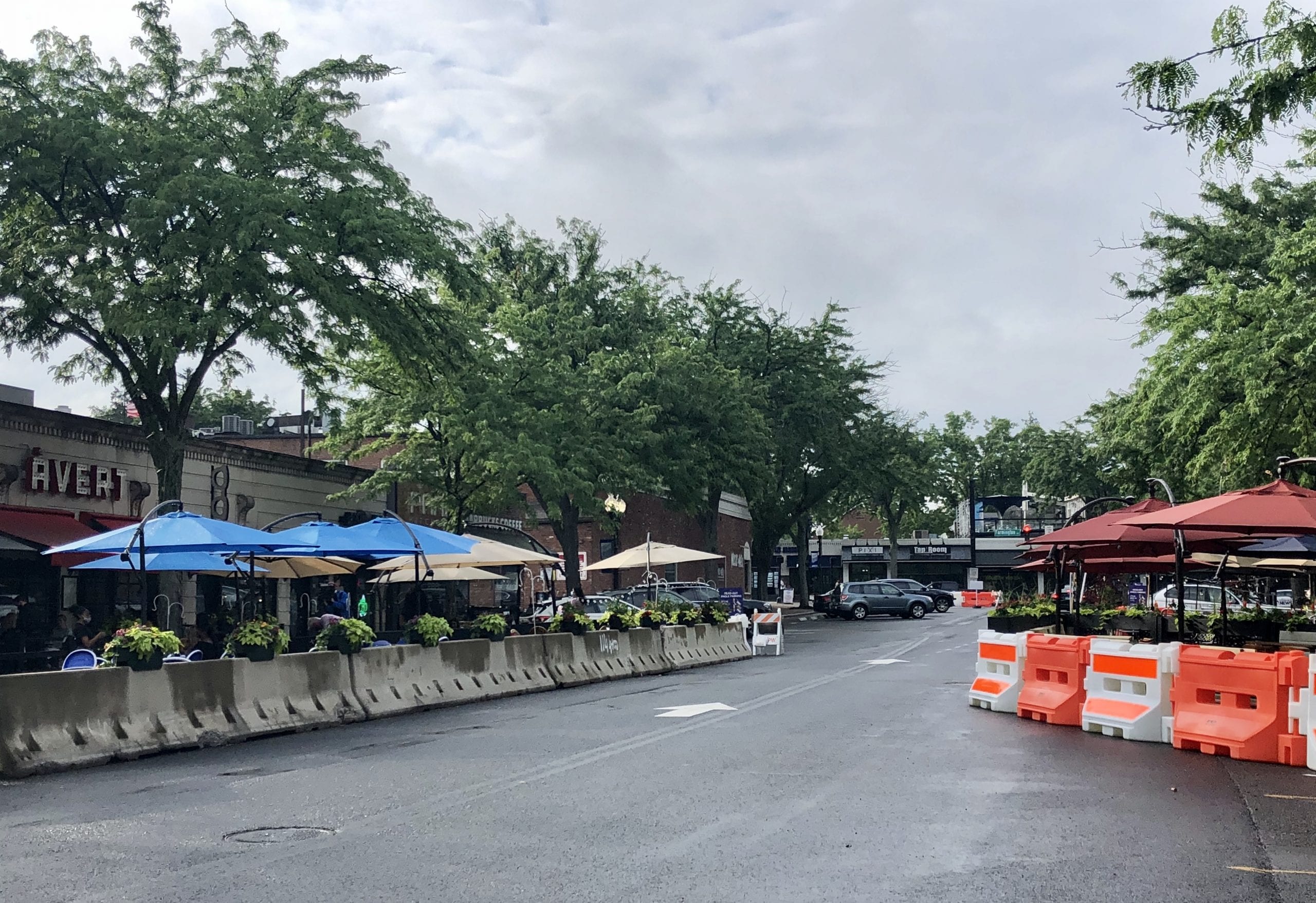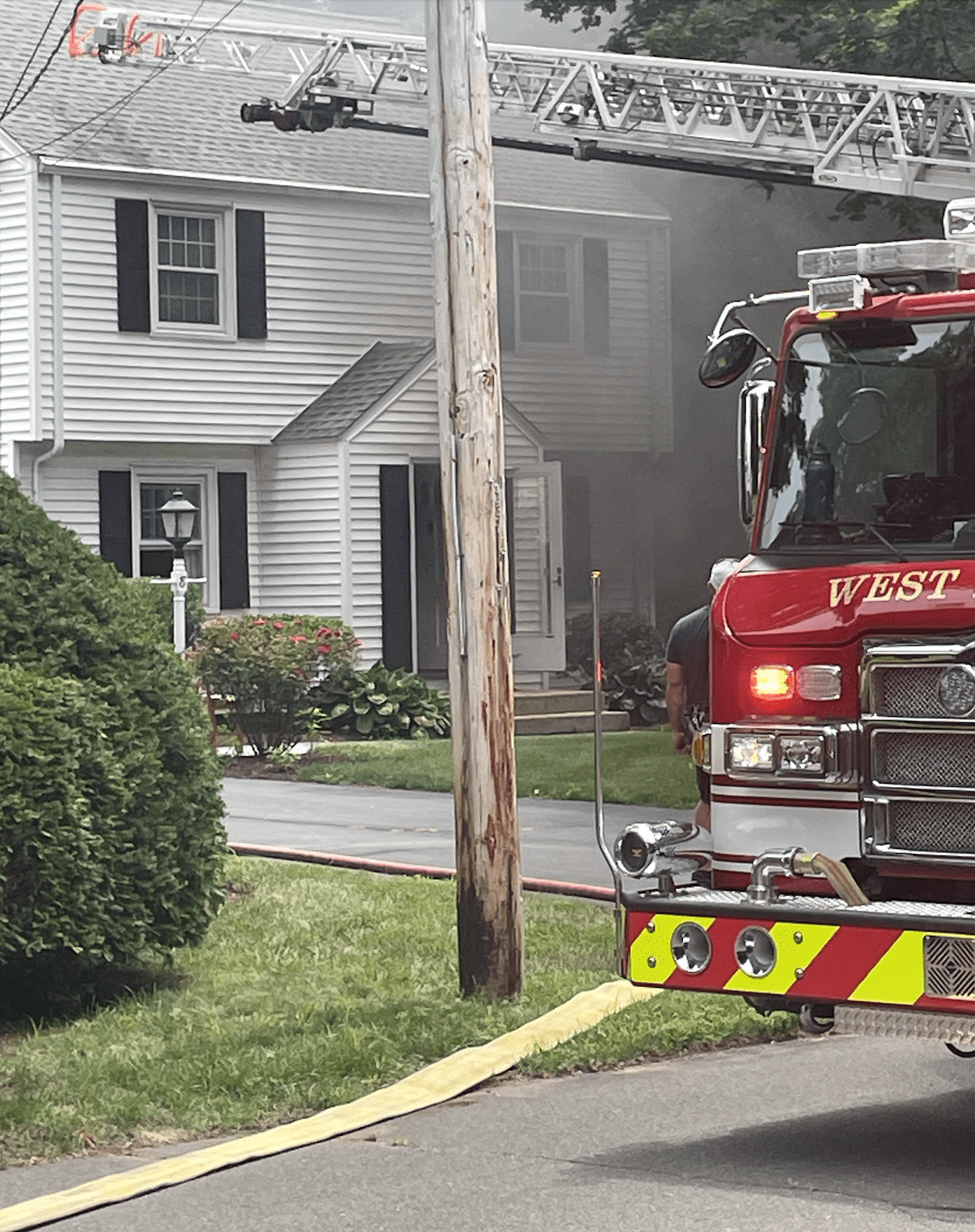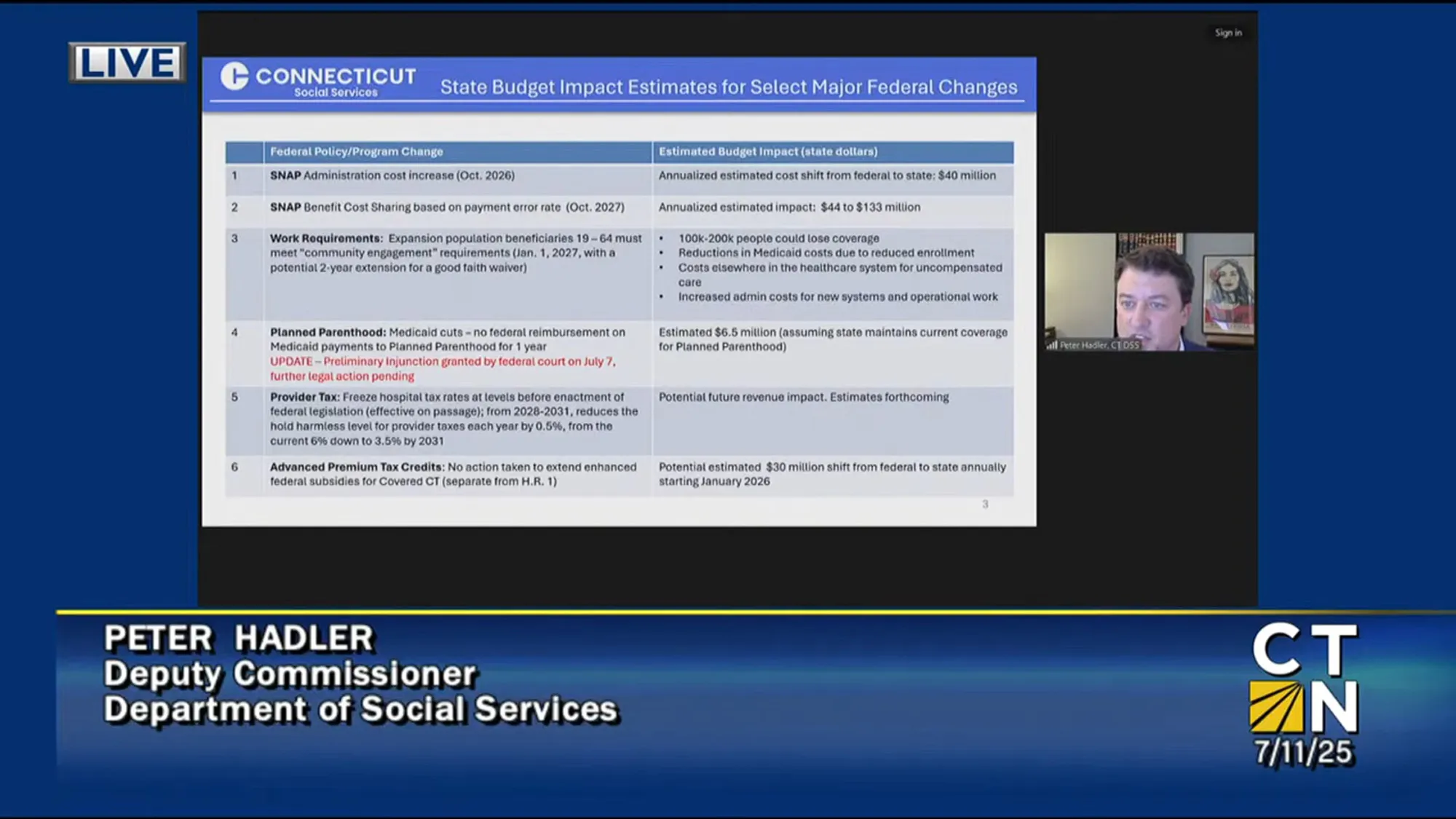Pandemic Creates New Challenges for Disabled

Audio By Carbonatix

West Hartford Center. Photo credit: Ronni Newton (we-ha.com file photo)
While the ability to work or attend school remotely may be helpful to those with disabilities, many other changes have led to additional challenges.
By Steve Jensen, CTNewsJunkie.com
Picture being developmentally disabled, out of work, and trying to navigate the labyrinth of obtaining unemployment benefits that has frustrated thousands of people with no disabilities. Or imagine trying to make your way in a wheelchair down a city sidewalk where shops and restaurants are now taking up former pedestrian space with curbside pickup and expanded outdoor dining.
These are examples of how the COVID-19 pandemic has created a new universe of challenges for the disabled community – and for those who serve them.
“This pandemic has really brought to the surface a whole lot of issues that those of us closest to them have been aware of for quite some time,” said Kathy Flaherty, executive director of the Connecticut Legal Rights Project Inc., based in Middletown. “We were able to pivot and make changes like remote work and school that were often denied to people with disabilities previously. One of my biggest fears is that as society reopens we will not continue to make these kinds of accommodations available to the people who need them.”
Nearly one in four Americans lives with some form of disability, whether physical, intellectual or behavioral. The obstacles many face on a routine basis – especially isolation and inadequate access to services – have been compounded by both the pandemic-associated shutdowns and the ongoing reopening.
One particularly troubling effect is how fear of spreading the virus has led to severe limitations on the critical personal contact between disabled individuals and their service providers and caregivers.
“We were prohibited from entering nursing facilities and meeting with people with disabilities face-to-face,” said Eileen Healy, executive director of Independence Northwest in Naugatuck, part of the CT Centers for Independent Living network. “We have used phones, email and video conferencing to maintain contact, but many people in nursing facilities don’t have access to mobile devices or the internet.”
Given the COVID-19 infection and death rate in nursing facilities, she said, the network has been working to move clients out of the facilities and into their own homes or those of family members.
The nursing facility “digital divide” also extends to some disabled students whose education is now offered through remote learning.
“As teachers are struggling with teaching via Zoom, kids with disabilities are also struggling to get their educational needs met,” Healy said.
There’s also the hearing impaired who have struggled during this time with the mask wearing requirement, which makes it impossible for them to read lips. Schools have made an effort to purchase masks that have clear plastic in the middle to allow for lip reading, but the general public are still wearing masks that cover their mouths.
Advocates also are concerned about the message and impact of government orders that “high-risk” residents such as people with disabilities remain at home even as many of their neighbors return to public activities.
“There is an ugly history of keeping disabled people behind locked doors in institutions,” said Flaherty, of the legal rights agency. “Telling us we have to stay behind the locked doors of our own homes while everyone else goes about their daily life is not a whole lot different.”
The state’s independent living centers have been trying to address the issue with services for homebound clients like grocery delivery paid for with funding from the federal CARES Act.
Far from a perfect solution, being homebound exposed other systemic issues such as a lack of personal protection equipment (PPE) for at-home clients, their family caregivers and other assistants.
“Social distancing is impossible for some people with disabilities that need assistance with personal care,” Healy said. “As the pandemic progressed, aides became infected and there weren’t enough people to provide the in-home care.”
Underlying many of these issues is what advocates call a lack of information regarding what services are or are not being provided in state-run facilities.
“Where is the transparency about numbers, testing, policies and procedures?” asked Flaherty. “What is happening in terms of visits from family members and friends? Are people able to social distance properly? Is there treatment being provided?”
Despite the myriad ongoing challenges presented by COVID-19, Healey said she sees the potential for the virus to force some positive outcomes, both for those who have disabilities and for those who don’t.
“This pandemic has created the need to make community changes that were previously only thought to benefit people with disabilities,” Healey said. “Working remotely is now an option for many employees that was previously denied for people with disabilities. Touchless entryways and payment systems are examples of changes that benefit all of us. This is an opportunity to incorporate the pandemic requirements to build a community that is both architecturally and attitudinally accessible for everyone.”
Republished with permission from CTNewsJunkie.com, all rights reserved.
Like what you see here? Click here to subscribe to We-Ha’s newsletter so you’ll always be in the know about what’s happening in West Hartford! Click the blue button below to become a supporter of We-Ha.com and our efforts to continue producing quality journalism.



